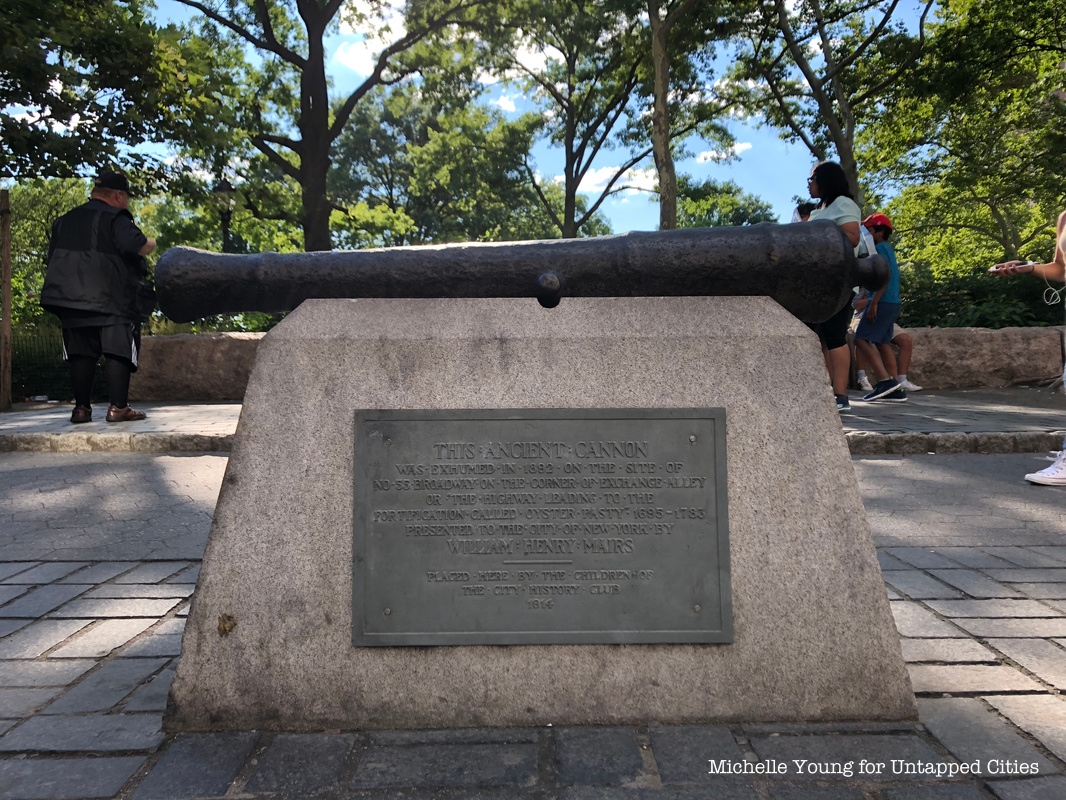As major history buffs, we’re constantly on the hunt for remnants of New York City’s storied past. Some artifacts require a bit of elbow grease to uncover while others are hidden in plain sight. One such find in an ancient cannon in Battery Park, which Untapped Cities tour guide, Justin Rivers, believes to be the oldest European artifact in Manhattan (built by European colonization and not brought over from Europe).
To learn more about this largely unknown remnant and the history of New York City, join us for our tour of the Remnants of Dutch New Amsterdam, taking place this weekend:
Tour of The Remnants of Dutch New Amsterdam
In the meantime, here’s what we’ve uncovered about the Battery Park Cannon, situated at the park’s perimeter:
Over the past decade, Battery Park has been extensively remodeled and changed. Historic treasures have consequently resurfaced and were later placed by the Parks Department along State Street and Battery Place.
In 1892, the ancient cannon in question was dug up at Exchange Alley and Broadway during construction, and was later used as a railing to number the site of 55 Broadway. However, the cannon was relocated to Battery Park (close to the Bowling Green control station) in 1914, when it was donated to the City of New York by William Henry Mairs and the City History Club.
A plaque on the cannon notes that Exchange Alley was formerly used as the path to British fortifications called “Oyster Pasty” (1695-1783). But before it was moved, the cannon was mounted along what is now the sidewalk opposite the Custom House, between the years 1683 and 1688.
In fact, The Iconography of New York actually dates the Oyster Pasty mount back to 1660, and Justin Rivers notes that it is seen on the Castello Plan. “This tells me it was moved at some point,” he notes.
A brief by Exchange Project also makes reference to the mount, stating that its name might be a reference to the oyster shell deposits left by Native Americans. In addition, Rivers provides us with scans of Ronald Tolke’s hard-to-find New Amsterdam map, which actually pinpoints where the mount was formerly located:
Today, the cannon remains on display in plain sight. Yet, its history remains largely unknown and forgotten about. To learn more about what else lies beyond the surface, join us on our upcoming tour this weekend:
Tour of The Remnants of Dutch New Amsterdam
Next, read about the Lost 17th-Century Canal that Once Ran Down Broad Street in Lower Manhattan and Trace the Original Wall of Wall Street with Wooden Markers.






